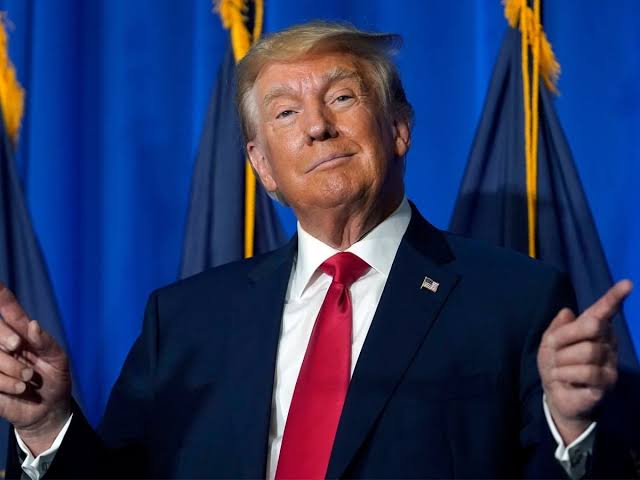The return of Donald Trump

By Kent E. Calder
More and more people expect that Donald Trump is coming back as U.S. president. This prospect has spawned buzz words in Japan using an abbreviation of the former president’s name: First it was “moshi Tora” or “if Trump” and then it became “hobo Tora” or “almost Trump.” American public opinion polls seem to show that tendency also.
Yet many people worldwide who thought they knew America well are also perplexed. How could Trump possibly come back, after all the scandals and Trump’s own caustic, idiosyncratic comments on his Truth Social website, often in the middle of the night?
And with a set of policies — from the Ukraine war and Vladimir Putin to gender relations — that seem to contradict so strongly the values and policies for which America has traditionally stood?
Historically also, there has only been one former president in American history to come back for a second term after being initially defeated for reelection — Grover Cleveland, over 130 years ago. At least five have failed.
In trying to calculate the actual prospects for Trump’s return to power, it is important to grasp first the growing fluidity and volatility of American politics today.
Little more than a quarter of American voters belong to either political party. Fully 43 percent of the U.S. electorate are independents, and that share is rising.
So many Americans are capable of shifting suddenly, and future prospects are very hard to predict. They can be sharply impacted by personalities or sudden events.
A second core reality is that Trump has a relatively small, but extraordinarily stable personal political base.
A few weeks ago I was in Rochester, New Hampshire, on a snowy, windy, and bitterly cold winter day before the primary election there.
I arrived at 1:30 p.m. for a 7 p.m. Trump rally, and a waiting line had already formed, in minus 10 C temperatures. By 5 p.m. the line was well over a kilometer long. The core Trump backers were fanatically loyal.
In that line, as across America at Trump rallies, were carpenters and truck drivers and shop keepers. There were more men than women — the gender gap between Trump and President Joe Biden supporters is now between 8 and 10 percentage points.
Across the country, 60 percent of Trump voters are white, without college degrees. And more than 60 percent have passed their 50th birthday.
Most of these Trump supporters, especially blue-collar white working men, think of themselves as victims of economic change, globalization, and sometimes affirmative action.
They remember an America with stronger unions, fewer immigrants, and more prosperity for people like themselves. So Trump’s slogan — “Make America Great Again,” or MAGA, emblazoned on millions of red hats across the country — resonates with deep emotional meaning for a substantial fraction of working America. It binds such people with a fervor approaching that of a cult, as Trump seems to embody their fondest hopes and dreams.
Trump’s base, buried in America’s heartland, is thus both passionate and parochial. It is not a group that foreign visitors to New York or Washington run into on the street every day, which helps to explain the world’s puzzlement both at Trump’s strength in 2016 and his seeming momentum now.
This Trumpian base does also resonate with some broader national sentiments, including the crises over drugs and undocumented immigration, now running at the highest levels in American history.
Trump’s base, however, is by no means a majority in the country. It is highly unlikely to exceed 46-47 percent of the electorate — the share Trump obtained in both 2016 and 2020.
Trump’s appeals do not extend easily to women with college degrees, for example, who support Biden by 60-40. The suburbs, the coasts, and minorities all tend to be broadly anti-Trump.
And this resistance is strengthened by broad sympathy to Ukraine, and a growing appreciation that the U.S. economy under Biden may well be achieving a soft landing.
Biden’s recent energetic State of the Union address also encouraged many doubting supporters about his vitality; Biden’s polling support numbers have consequently begun to pick up.
Due to America’s electoral-vote system, whereby win-loss calculations for the presidency are made on a state-specific basis, the conflicting pro and anti-Trump streams in American politics converge on a small number of decisive political battlegrounds.
There the strength of both sides is evenly balanced. The most important of these battlegrounds for 2024 will most likely be the “Blue Wall” states in the Upper Midwest (Wisconsin, Michigan, and Pennsylvania), so-called because their voters are traditionally Democrats, whose symbolic political identification color is blue.
This region is the industrial Rustbelt of America, where large auto firms and steelmakers like Ford Motors and U.S. Steel have been based for a century and more.
In 2016 Trump smashed the Blue Wall, taking all of its three key swing states by narrow margins, thus unexpectedly gaining the presidency. To win again, he will need to do something similar. As in 2016 his prospects — and those of Biden as well — will be further complicated by third-party candidacies, particularly that of Robert Kennedy Jr.
Since Trump’s political base is narrow, if passionate, it is important for him that third candidates like Kennedy draw away Biden supporters, so that Trump can reach the presidency through a minority plurality.
That prospect was enhanced in late March when Kennedy named Nicole Shanahan, the wealthy former spouse of Google co-founder Sergey Brin, as his vice presidential candidate. With added resources, Kennedy will be better able to extend his appeal in swing states, likely threatening Biden more than Trump.
If Trump is leading in the polls, Biden is 81 years old, and Kennedy is further threatening Biden, then why are we not now at “hobo Tora?” Most importantly, due to undercurrents that are difficult to see from afar.
First of all, the Republicans themselves are quietly yet deeply divided within, with affluent Wall Street and country-club lobbies still bitterly opposed to the populist Trump.
In addition, nearly half the national electorate is independent of parties; Trump also confronts a tsunami of legal and financial difficulties that will deepen in coming weeks. Biden has twice the political funding of Trump at this stage, as well as the active campaign support of two charismatic former presidents: Bill Clinton and Barack Obama.
Many of Trump’s own former advisors, such as former National Security Advisor John Bolton and even Vice President Mike Pence, are deeply critical of him as well. At this stage, with Trump likely weaker than the polls suggest, the old Japanese political adage still applies in America also: “Issun saki wa yami,” or “Inches ahead is only darkness.”




